I paused recently on a path in a park in Oakville waiting for a man and his dog to pass by so I could take a photo of the Trout Lilies tumbling down the hillside. He asked what I was watching and seemed puzzled when I said the flowers. Then he looked more closely and admitted he hadn’t seen the hundreds of yellow bells on the slope–the showier Trilliums were the first flowers he usually noticed. Many of the first wildflowers of the spring are more subtle but they are just as welcome and wonderful to see after a long dull winter.
I haven’t seen wild Hepaticas in many years. This patch is in a wildflower garden at the Riverwood Conservancy. The dancing blossoms in pink, white and purples brought back some lovely memories.
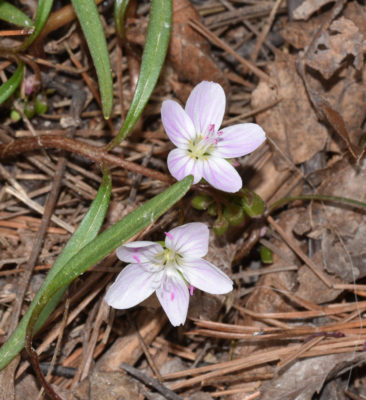
Spring Beauties also stayed tightly furled until the afternoon sun reached them. Then they seemed to magically appear along the path edges.
Toothworts and Wistfully Wishing for Odd White Butterflies
The Cut-leaved Toothwort is just starting to bloom. I took a good look at the leaves this year and am fairly confident of my id even though on some websites the leaves are much narrower than these.
Toothworts are one of the preferred foods of a couple of less-common-now butterflies: Mustard Whites and West Virginia Whites. I’m a bit puzzled, though, about when the eggs are laid. I thought that these plants die back quickly after they finish blooming, yet the butterfly sightings often seem to be in May or later. Do the butterflies lay the eggs on the withered stems of the plants to over-winter and hatch in the spring to eat the new shoots? Or do the leaves last much longer than I thought?
Ah. Further research via The ROM Field Guide to the Butterflies of Ontario tells me that the West Virginia Whites are only known to feed on Two-leaved Toothwort, so I guess I won’t be looking for them in my parks. This less common type of Toothwort does not die back as quickly as the Cut-leaved Toothwort does.
And the Mustard Whites, which will eat Cut-leaved Toothwort will also eat some other mustards. That explains better how they are seen throughout the summer as well as in the spring.
A report by the USDA says that the West Virginia White butterflies only live for 5-10 days as adults, the eggs hatch after 5-10 days, the caterpillars grow for 10-20 days, then they rest as pupa for 10-11 months.
I guess it’s unlikely I’ll find any West Virginia Whites in my parks but I might find some Mustard Whites. So I should get out there are and try for a look–if it ever stops raining!
The Hiding then H’Obvious Bloodroot
The Bloodroot flowers were almost invisible when I walked through this park in the cold morning wind–on the way back, though, when the sun had peeked out and the wind had died down, they all opened widely as if applauding the higher temperature. All of a sudden, they were everywhere I looked.
Nearby,
Dutchman’s Breeches Blowing in the Cold Breezes of April in Oakville
Last year on the TFN wildflower walk at Sixteen Mile Creek in Oakville, we saw some Dutchman’s Breeches blossoming along the edge of the path. They were almost finished for the year, though. This year, I checked earlier to see if I could get a photo of a fresher stem. The first time I passed in April, there were only small buds promising later blooms.
By the 18th of April, though, many of the plants had a stalk or two of open flowers. Of course, they were dancing in the northern breeze which made getting even a reasonable photo a challenge for me. Still, I got to see them, which is most of the fun.
I also took a few photos of the finely cut leaves to remind myself what they actually look like.
The patch is growing almost underneath a criss-crossing fence of goldenrod, Dame’s Rocket and aster stems. It isn’t under any trees, however, or even close to any. I’m not sure if that’s normal or not. The guides suggest they are a woodland plant despite the sunny location this group is growing in.
Mother’s Day Wildflowers Are Getting Ready to Joyfully Burst Out
Many parks offer guided wildflower walks on Mother’s Day weekend in May. It’s a great time to explore as many of the showier spring wildflowers are in bloom then. The Trilliums are in bud already, on April 18, getting ready for their big debut.
The Virginia Bluebells are also up. Their rich leaves are quite noticeable.
Some of the Bluebells are even in bud. I only saw a few plants in full bloom last year. I hope the spring rains will take a few daytime breaks so that I can get a better look this time.
These next photos are, I think, of Twinleaf buds. The leaves starting to unfurl near the base look likely. I’ll have to check soon if I can.
Some of the Early Meadow Rue is still in bud.
But on a few brave plants, some of the flowers are open.
The Early Saxifrage is also in bud. Eventually, the blossoms will be up in the air on slender stems.
Non-native Flowers of Spring in the Toronto Area
Not all of the types of flowers blossoming in the spring are native:many are ‘aliens’ who have established themselves as permanent residents in their new homeland.
Some, like this dandelion, are very useful for native insects. The high protein content of the dandelions’ pollen is welcomed by many insects.
Creeping Charlie also seems to offer something to the spring time bees.
Coltsfoot is one of the first plants to colonize bare soil–and early April butterflies like Milbert’s Tortoiseshell seem to appreciate it.
What’s not to like about Spring?
Related Reading
Join In
Do you have a favourite spring wildflower? Please share your views with a comment.

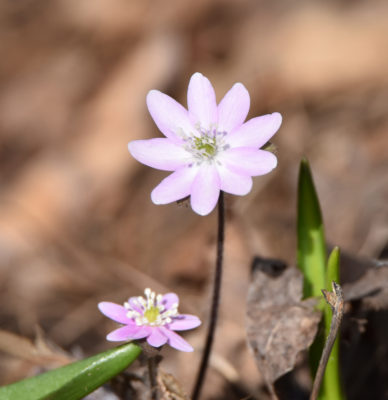
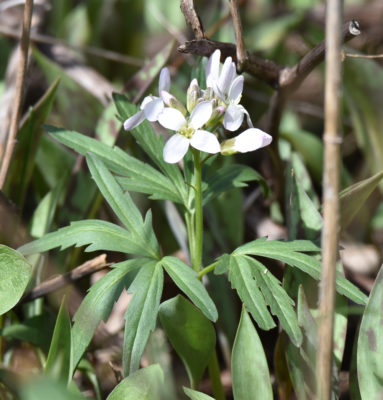
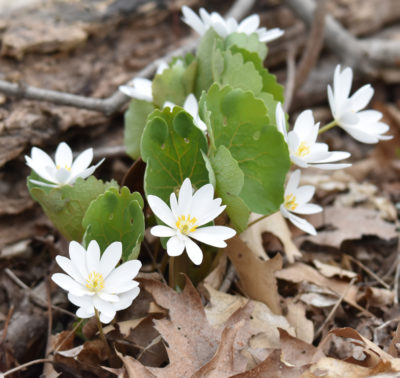
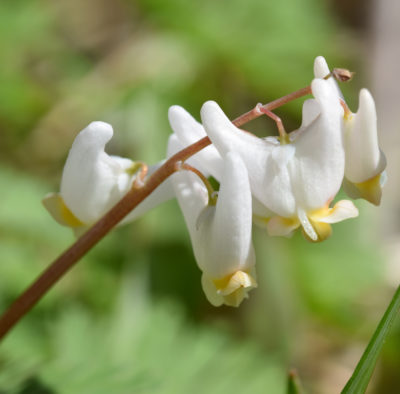
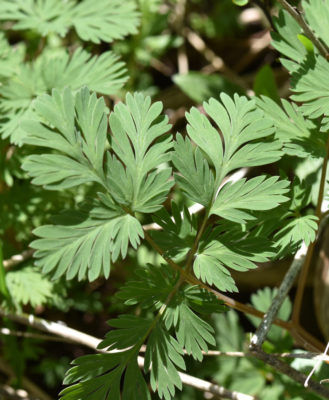
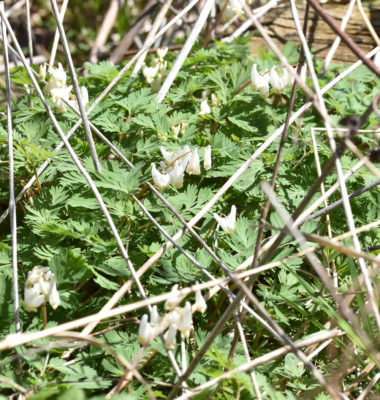
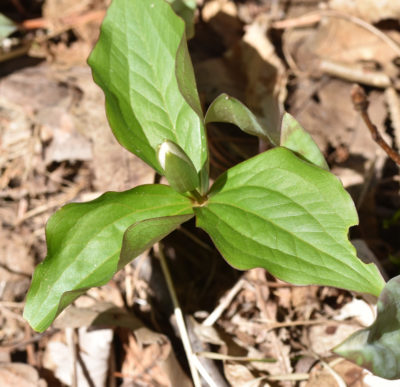
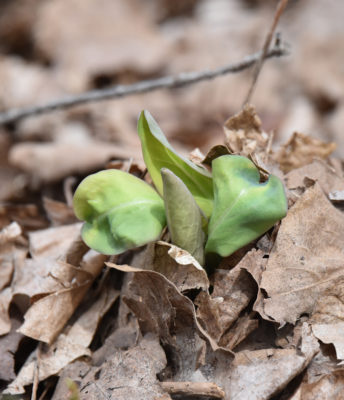
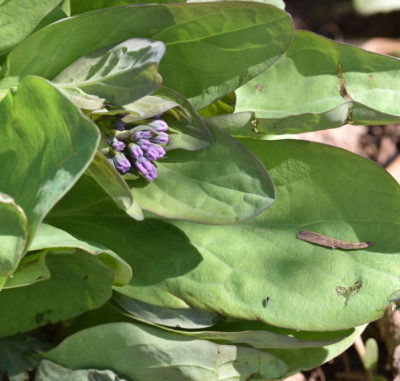
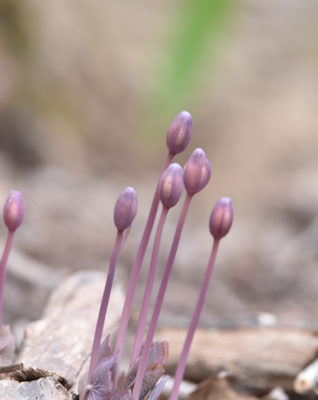

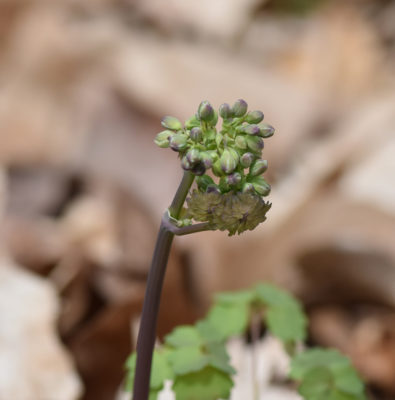
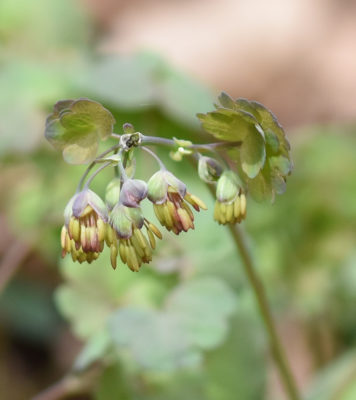
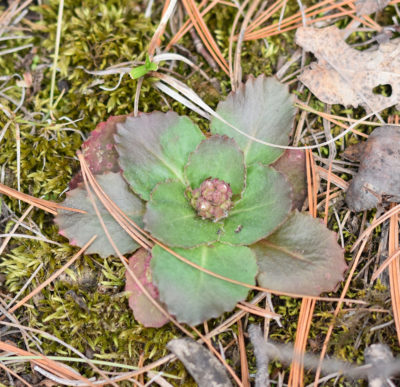
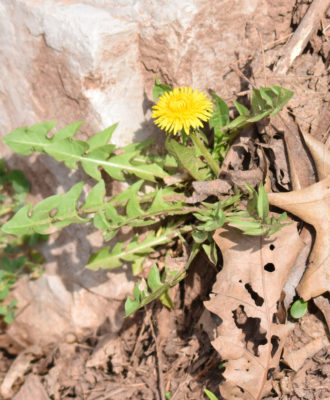
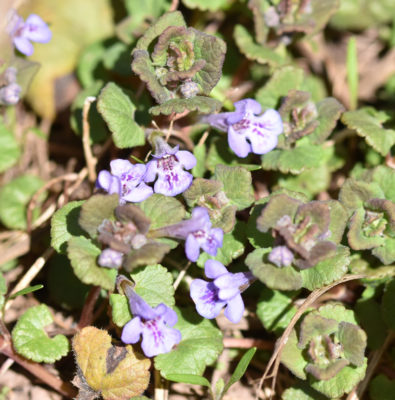
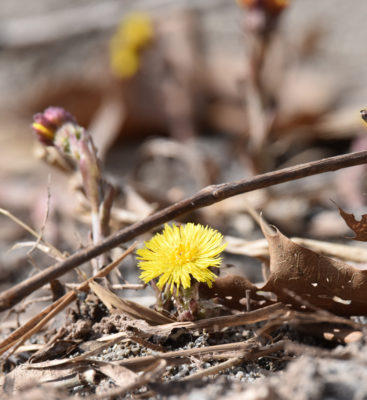
Lovely post! Helped me identify some of the wildflowers I saw in bloom today, out in the woods south east of Ottawa. :) Thanks for sharing!
There are some great flowers up your way–hope it stops raining long enough to enjoy more of them!